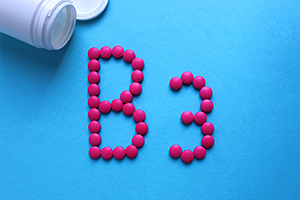



| By Dr. Ronald Hoffman
As part of our mission here at Intelligent Medicine, I try to keep my readers apprised of the latest in health news. This week, I’m bringing you three stories that caught my eye from the realm of nutrition, and offering my take on each of them.
 Folic Acid vs. Uric Acid: In a study of 15,364 hypertensive Chinese patients, average age 60, the addition of 800 micrograms/day folic acid significantly reduced elevated uric acid. Am J Clin Nutr 2017; 105: 882-9
Folic Acid vs. Uric Acid: In a study of 15,364 hypertensive Chinese patients, average age 60, the addition of 800 micrograms/day folic acid significantly reduced elevated uric acid. Am J Clin Nutr 2017; 105: 882-9
MY TAKE: High uric acid (hyperuricemia) causes gout and uric acid kidney stones; it is also an acknowledged risk factor for heart disease. In nutritional medicine, we’ve long been aware that high-dose 5-methylfolate (the preferred, natural form of folate) can lower blood levels of uric acid and stave off gout attacks. It turns out that folate is an inhibitor of xanthine oxidase, an enzyme that synthesizes uric acid. There are medications that lower uric acid by inhibiting xanthine oxidase—allopurinol (Zyloprim) and Uloric—but they have side effects and require blood tests for safety monitoring.
It turns out that inhibition of xanthine oxidase has another effect: it lowers blood pressure. In this large Chinese study, folic acid did not lower blood pressure, perhaps because the subjects were already on potent blood pressure medications, or that they were older, with long-standing difficult-to-reverse hypertension.
An additional benefit of folate, also confirmed in this study, is that it lowers homocysteine, high levels of which are associated with coronary artery disease, stroke, and dementia.
This wasn’t a study of gout, but it would be interesting to see if long-term high-dose folate—say 5 milligrams daily—would lower risk of gouty attacks. Since gout sufferers often have hypertension and cardiovascular disease risk, taking folate would seem to offer multiple avenues of protection; folate might be worth a try for patients with elevated uric acid before prescribing high-risk medications that need to be taken for a lifetime.
Vitamin D vs. Coronary Artery Disease: In a meta-analysis comprising 34 studies and 180,667 participants, there was an inverse association between cardiovascular events or deaths and serum levels of 25-OH vitamin D (higher vitamin D = less cardiovascular disease). For each 10 ng/ml increment in vitamin D levels, there was a 10% reduction in risk. Am J Clin Nutr 2017;105:810-19
MY TAKE: During the past decade, an increasing number of studies have suggested a protective effect of vitamin D on cardiovascular disease, but controversy persists. It makes sense that vitamin D may be cardioprotective because 1) vitamin D has has been shown to exert a regulatory effect on heart muscle cells and vascular smooth muscle cells; 2) low levels of vitamin D activate the renin angiotensin system, which raises blood pressure; 3) vitamin D may have anti-inflammatory effects on blood vessel linings; and 4) vitamin D inhibits certain matrix metalloproteinases (MMPs) which contribute to plaque instability and heart attacks.
Note that this was not a controlled trial of vitamin D supplementation to prevent heart attacks and stroke; some study participants undoubtedly were taking supplemental vitamin D, others not. Few were probably taking high-dose vitamin D. It may be that, for some reason, sicker individuals have lower vitamin D. Alternatively, vitamin D adequacy may be associated with healthier behaviors. In other words, this study only establishes correlation, not causation.
The protective effects of higher levels of vitamin D might even have been more robust, but this study was underpowered to detect it: only 5% of participants had 25-OH vitamin D levels greater than 40 ng/ml. Many of my patients who take 2000-5000 IUs of vitamin D per day have 25-OH D levels of 60 or 70 ng/ml or higher.
So, while suggestive of positive impact, it remains for researchers to conduct long-term, double-blind placebo controlled trials of D supplementation to see if it turns out to be protective. Such a trial is underway, the VITAL study, designed to test whether vitamin D 2000 IU per day, with or without fish oil supplements, is beneficial for either cancer or heart disease.
It’s ironic that the very same month this study appeared in a major nutrition journal, New York Times health reporter Gina Kolata penned an article snarkily headlined “Why Are So Many People Popping Vitamin D?”, insinuating that vitamin D testing is a waste of money, and that, other than for osteoporosis, no studies have conclusively demonstrated its disease-protective effects.
Green Tea Increases Resting Energy Expenditure: A concentrated beverage derived from green tea, consisting of catechins including EGCG, and small amounts of caffeine, increased resting energy expenditure (REE) in 9 of 16 healthy young men. It was demonstrated that catechins increased thermogenesis (fat-burning) via stimulation of the formation of brown adipose tissue (BAT). Am J Clin Nutr 2017; 105:873-81
MY TAKE: Green tea, and in particular one of its constituents, the catechin epigallocatechin gallate (EGCG), has been shown to have thermogenic effects, suggesting potential benefit as an adjunct to diet and exercise in weight loss. Precisely how that occurs has been poorly understood.
Previous studies have demonstrated that capsinoids, derivatives of hot peppers with the pungency removed, can promote weight loss via augmentation of BAT. Contrary to white fat, which is a storage depot for fat, BAT supports fat oxidation to generate heat (thermogenesis) as a hedge against cold temperature exposure. Exercise and cold exposure have been shown to stimulate BAT. This offers a novel mechanism to impact REE, and hence obesity.
The new study suggests that green tea catechins also support REE via an effect on BAT. The effect was not dependent on caffeine, because control subjects were given an identical amount of caffeine without the active catechins, and they didn’t show BAT accentuation.
This is encouraging, but it must be noted that no significant weight loss was seen in the experimental subjects, despite their accelerated rate of fat-burning. Previous studies of longer duration (8-12 weeks) had indeed demonstrated some weight loss acceleration with EGCG; this new study lasted only 5 weeks, and the subjects were not particularly obese to begin with.
I hope this little overview has helped you to better understand these recent headlines, and I encourage you to explore the articles linked above for an even deeper understanding.
Though we think of declining estrogen as the hallmark of menopause, it's actually common for…

Up to 12 percent of Americans have ulcers at some point in life. Peptic ulcers…
Gallbladder disease is a modern illness. An estimated 20 million Americans have gallbladder disease. The…

New, more powerful weight loss drugs: Drugs like Wegovy, Rybelsus, Ozempic and Mounjaro/Zepbound are revolutionizing…

According to the Lancet, autoimmune disease affects one in ten people globally and it’s now…

This past week we were regaled with headlines like: High levels of niacin may increase…

Leyla Weighs In: The Erosion of Trust in Nutritional Research

Our virtual voicemail is open 24/7, so there's no need to wait to submit your questions for Dr. Hoffman. Leave a message, and you may hear your question featured on the Intelligent Medicine radio program!